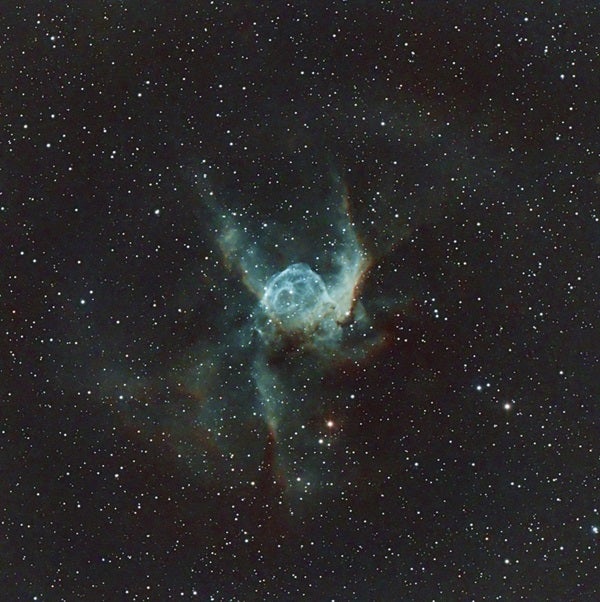Within the constellation Canis Major is a tiny fugitive that will take some Mando-level mettle to spot.
NGC 2359 is an emission nebula surrounding the blazingly hot Wolf-Rayet star WR7. Although NGC 2359 has traditionally been known as Thor’s Helmet, recently it’s also earned the nickname the Baby Yoda Nebula. After all, maybe the round dome of the helmet is actually Grogu’s head and the helmet’s wings are really his unmistakable ears?
The Baby Yoda Nebula can be a challenge to spot, especially with its low altitude in the sky at this time of year. Shortly after sunset, Canis Major is already sinking toward the southwestern horizon, taking this adorable bounty with it. Baby Yoda hovers nearly 9° east-northeast of Sirius — the brightest star in the northern sky.
WR7 (also cataloged as HIP 35378) is a magnitude 11.5 star that you’ll need a telescope to track down. And while a 6-inch or smaller scope will show Baby Yoda as a fuzzy patch in the sky around the star’s location, to make out his ears, you’ll need an instrument larger than 10 inches.
If your goal is snapping a pic of the Child, astrobackyard.com suggests opting for a longer focal length (400mm or greater) as well as using a narrowband filter to really bring out details in the nebula’s gas. You’ll also need a lot of exposure time, which may mean imaging over multiple nights, since the nebula sets so early at this time of year.
Astronomers have pegged WR7 as more than 280,000 times more luminous than our Sun, and it holds at least 16 times our star’s mass. Wolf-Rayets are simply massive stars in the late stages of their evolution; they have intense winds that strip the star of much of its mass. Researchers estimate these stars can blast away up to 10 Suns’ worth of material over the course of only about a million years.
Once shed, all that material typically forms a nebula of glowing gas and dust around the star, which can take on a unique — and sometimes recognizable — shape. In the case of NGC 2359, it creates a profile you won’t want to miss!










